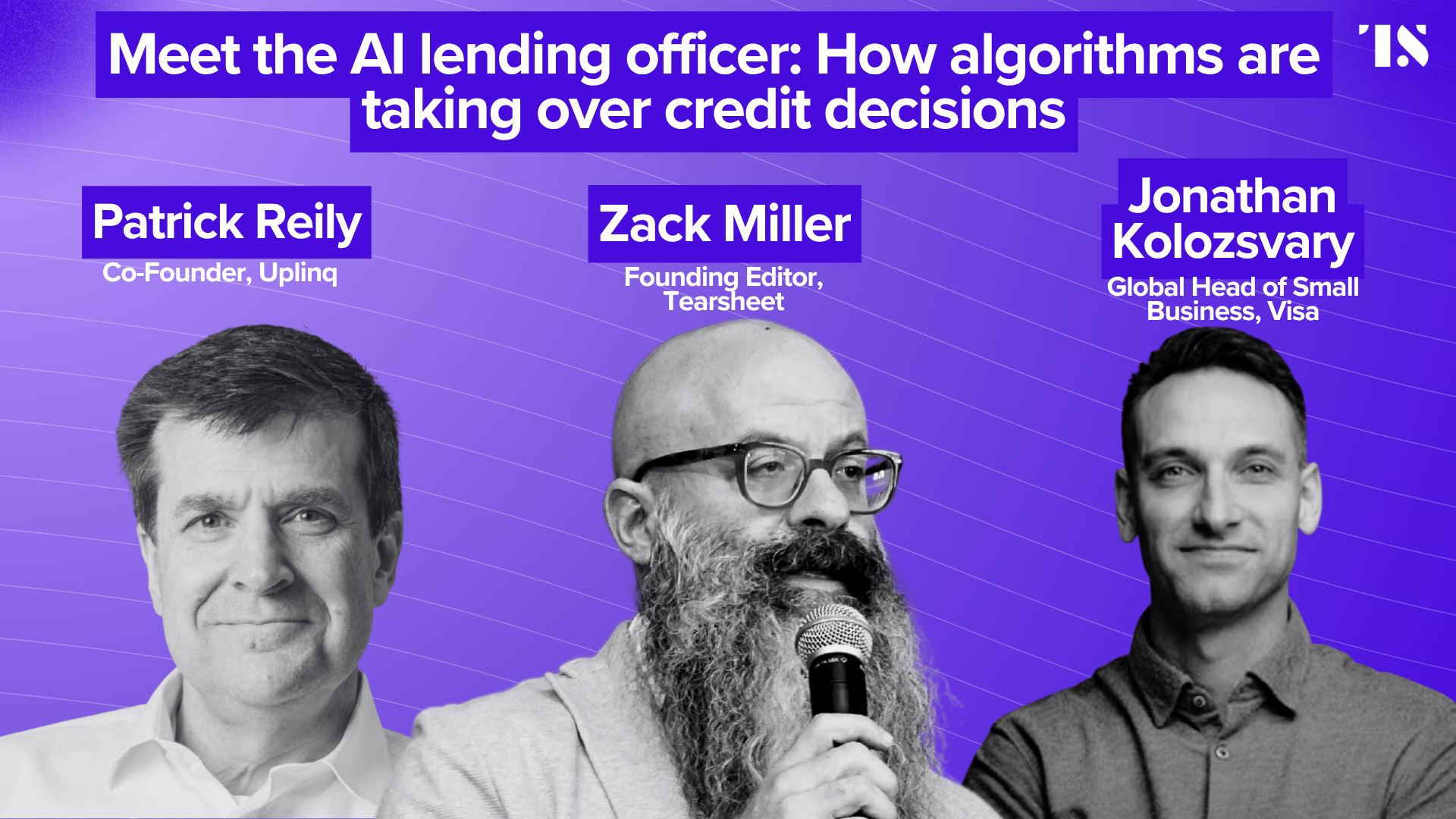Meet the AI lending officer: How algorithms are taking over credit decisions
- Small business lending represents the last major frontier for AI transformation in financial services.
- Visa's Jonathan Kolozsvary and Uplinq's Patrick Reily explore how AI lending officers are using transaction data to unlock capital for underserved businesses.

The traditional lending officer is facing their biggest disruption in decades. Generative artificial intelligence is oozing into financial services quickly and deeply enough that it’s already impacting how we evaluate credit risk and make lending decisions.
This tension between human judgment and algorithmic precision is the latest focus in our ongoing AI series exploring how artificial intelligence is transforming financial services.
Joining us are Jonathan Kolozsvary, Global Head of Small Business at Visa, who brings insights on how transaction data can unlock lending opportunities that traditional credit models miss. And Patrick Reily, co-founder of Uplinq and Malcolm Baldrige Award recipient, whose AI predictive models are already being used by the Federal Reserve.
Together, they tackle a critical question: Are we witnessing the evolution of the lending officer, or are we approaching a future where algorithms handle what humans have done for generations? The answer will shape the future of lending and the broader relationship between technology and trust in financial services.
Listen to the episode
Subscribe: Apple Podcasts I SoundCloud I Spotify
Watch the episode
AI as a solution to small business credit gaps
Traditional lending has left small businesses dramatically underserved despite their economic importance. As Patrick Reily explains, “small business makes up 44% of the US economy…but only about two and a half percent of loans on bank balance sheets are small business loans.” AI can address this gap by handling the complexity that has made small business lending so challenging for traditional methods.
The need for real-time data in modern underwriting
Traditional credit models rely on outdated, static information that doesn’t reflect the dynamic nature of small businesses. Jonathan Kolozsvary from Visa explains that banks have “historically been a traditional underwriting model…that has really only viewed small businesses either on their consumer history, first with a thin or flat file, or as the small business grows…static or transactional data alone, when in reality, a small business owner and the ebbs and flows of their cash flow is really predicated on more market dynamic data.”
Collaboration over disruption in financial services
Rather than replacing traditional banking, AI represents an opportunity for enhanced partnership between fintechs and established institutions. As Reily notes, “what you have now is much more collaboration…really taking advantage of what they do very, very well, and then equipping them with the tools to then reach deeper.” This collaborative approach leverages each party’s strengths rather than creating unnecessary competition.



